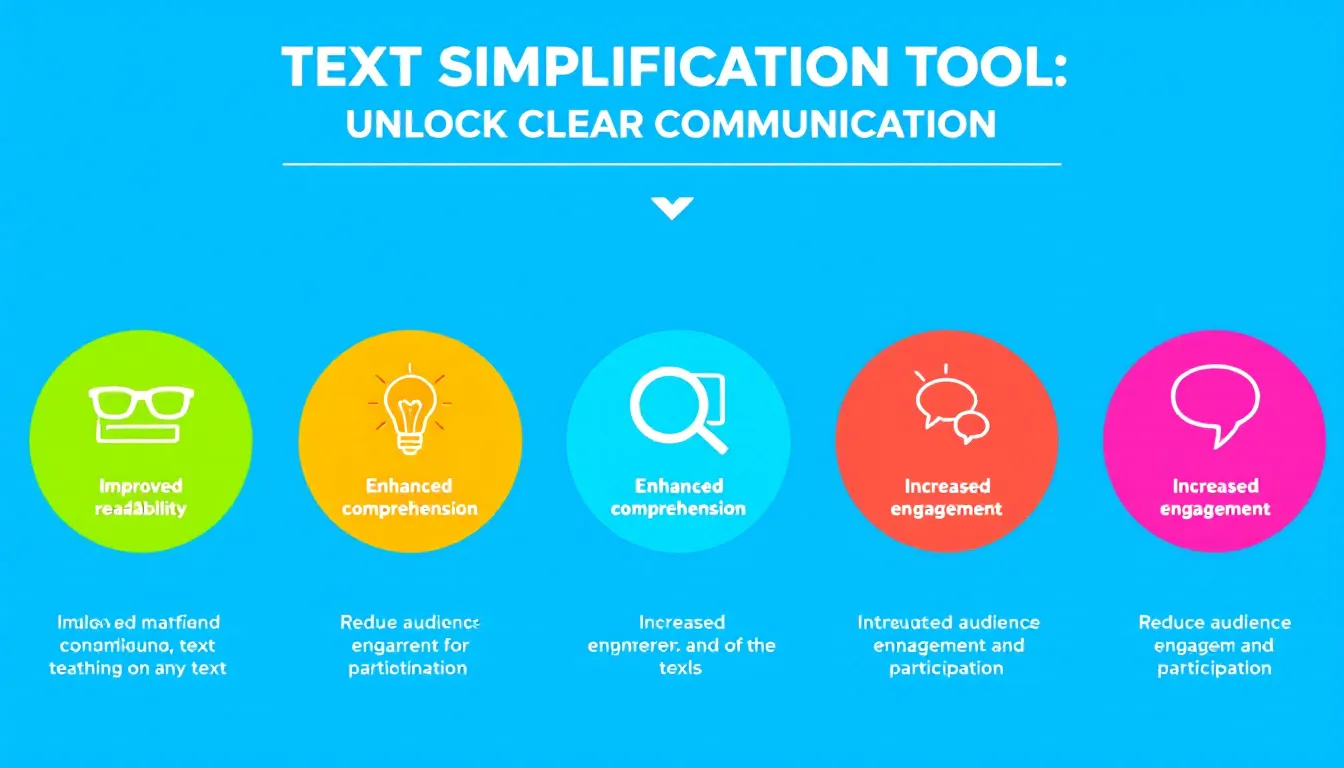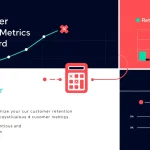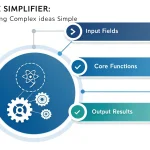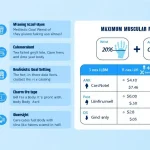Text Simplification Tool
Is this tool helpful?
How to Use the Text Simplification Tool Effectively
This Text Simplification Tool helps you rewrite complex content so that anyone can understand it. Follow these simple steps to get the best results:
-
Enter the Complex Text: Paste or type the difficult content you want to simplify into the main text box. For example:
- “The multifaceted dynamics of climate change necessitate comprehensive policy responses tailored to mitigate its diverse impacts.”
- “Cryptocurrency markets exhibit high volatility due to speculative trading and fluctuating regulatory environments.”
-
Specify the Target Audience (Optional): You can enter the education or comprehension level of your intended readers to guide the rewriting process. For instance:
- “Middle school students”
- “People unfamiliar with scientific terms”
- Click “Simplify Text”: Submit your information by clicking the button to start simplifying your text.
- Review the Simplified Output: Once processing finishes, the simpler version appears below the form for you to read.
- Copy and Use the Simplified Text: Use the copy option to transfer the readable text to your documents or presentations.
Always check the simplified version to ensure it matches your intended meaning.
What This Text Simplification Tool Does and Why It Matters
This tool transforms complex, jargon-heavy writing into clear and easy-to-understand language. Its purpose is to help you communicate better with audiences who may find technical or academic writing challenging.
By reducing complexity without losing meaning, the tool helps make information accessible to more people, from students and professionals to the general public.
Using this tool improves readability, supports better learning, and saves time rewriting content manually.
How the Tool Works
The tool applies advanced natural language processing techniques to:
- Replace Hard Words: Finds complex terms and swaps them with simpler alternatives.
- Shorten Sentences: Breaks long, complicated sentences into smaller, clearer ones.
- Remove Unnecessary Details: Focuses on the main points by cutting out extra information.
- Explain Difficult Concepts: Adds clarifications for terms your audience might not know.
Practical Uses for the Text Simplification Tool
This tool suits many fields where clarity and accessibility matter. Here are some common uses:
1. Education and Learning Support
Teachers and tutors simplify textbooks, articles, or lectures for students at various levels. This helps students grasp challenging subjects without frustration.
Example:
Original: “Osmosis involves the passive movement of water molecules through a semipermeable membrane from a region of lower solute concentration to higher concentration.”
Simplified: “Osmosis happens when water moves through a special barrier from places with less dissolved stuff to places with more.”
2. Healthcare Communication
Doctors and healthcare providers explain medical instructions and information in simpler terms. This improves patient understanding and health outcomes.
Use Case:
Creating easy-to-read medication guides that patients can follow without confusion.
3. Business and Corporate Messaging
Simplify emails, reports, or policy documents to ensure all employees and stakeholders understand key messages regardless of their background.
Example:
Original: “Our strategic pivot aims to leverage synergies across departments to streamline operational workflows.”
Simplified: “We plan to work together across teams to make how we do things faster and easier.”
4. Legal and Technical Documents
Make contracts, user manuals, or technical instructions easier to read, reducing confusion and errors.
Use Case:
Simplified terms of service that users can quickly understand before agreeing.
5. Scientific and Research Summaries
Researchers prepare summaries that policymakers and the public can easily grasp, promoting informed decision-making.
Example:
Turning dense research findings into concise, straightforward explanations.
Key Benefits of Using This Text Simplification Tool
- Improves Accessibility: Makes content understandable for people with different education levels and language skills.
- Enhances Comprehension: Clearer content helps readers remember information better and stay engaged.
- Saves Time: Automates rewriting, so you don’t spend hours simplifying text manually.
- Maintains Consistency: Ensures all your communications have a similar clear style, no matter who writes them.
- Boosts SEO: Search engines prefer readable content, which increases your online visibility and traffic.
Frequently Asked Questions (FAQ)
Can the tool simplify specialized terms?
Yes, it identifies and simplifies technical jargon but keeps important industry terms intact. Always review the result to confirm accuracy.
How do I choose the right audience level?
Enter a clear description of your target readers, like “community members without scientific background” or “college students studying economics.” This helps tailor the output complexity.
Is there a limit to the text length?
The tool handles various lengths but works best with manageable parts. Break very long documents into sections for smoother processing and better results.
Can I use this tool for languages besides English?
Currently, the tool supports English only. Support for other languages is planned for future updates.
How do I make sure the original meaning is preserved?
Review the simplified text carefully. The tool maintains meaning but subtle nuances may require manual tweaks.
Is the tool suitable for creative or literary writing?
It works best with informational or technical texts. For creative writing, simplified versions can be a starting point, but style and nuance should be added manually.
Final Thoughts on Text Simplification for Better Communication
Simplifying complex content helps you reach a wider audience and ensures your message is clearly understood. Whether you’re an educator, professional, or content creator, this Text Simplification Tool assists you in making your writing inclusive and accessible without losing meaning.
Use it regularly to improve communication, support learning, and save time rewriting complex ideas. Clear language drives understanding, and good communication builds connections.
Important Disclaimer
The calculations, results, and content provided by our tools are not guaranteed to be accurate, complete, or reliable. Users are responsible for verifying and interpreting the results. Our content and tools may contain errors, biases, or inconsistencies. Do not enter personal data, sensitive information, or personally identifiable information in our web forms or tools. Such data entry violates our terms of service and may result in unauthorized disclosure to third parties. We reserve the right to save inputs and outputs from our tools for the purposes of error debugging, bias identification, and performance improvement. External companies providing AI models used in our tools may also save and process data in accordance with their own policies. By using our tools, you consent to this data collection and processing. We reserve the right to limit the usage of our tools based on current usability factors.







